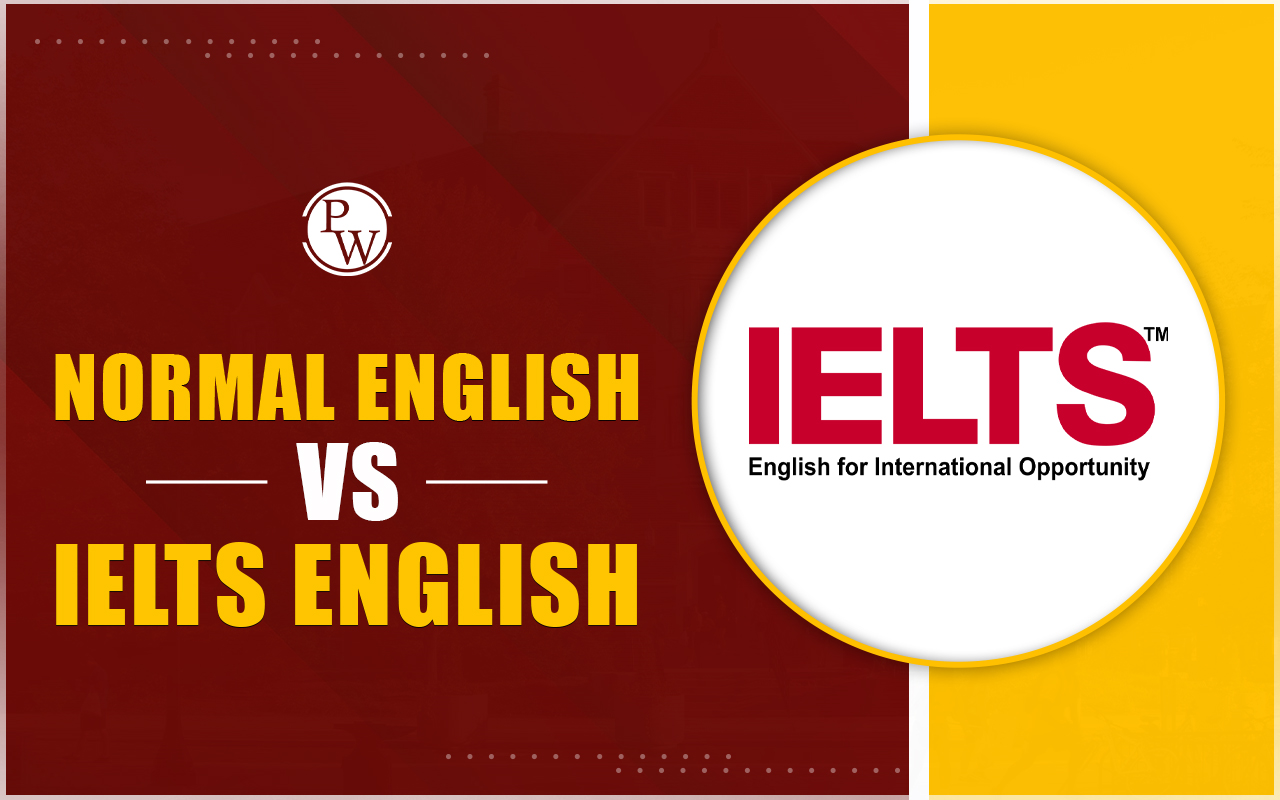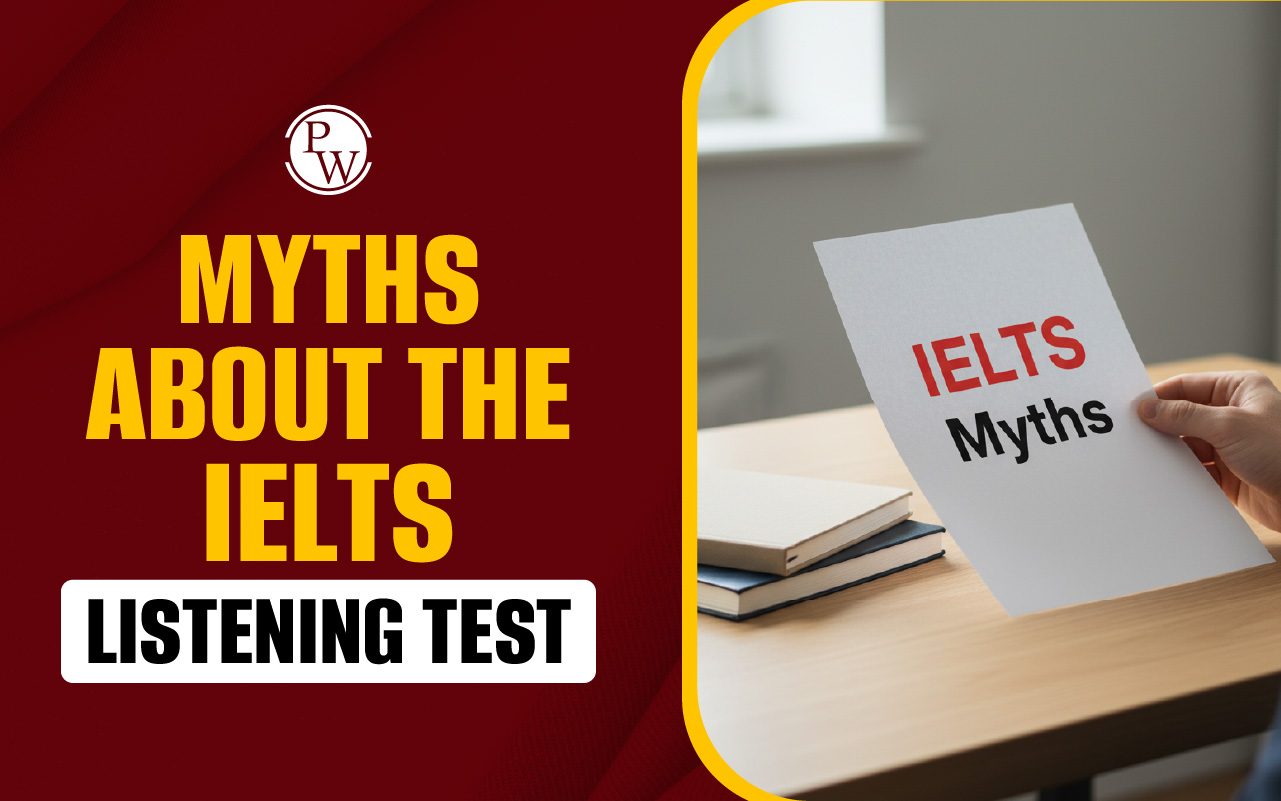

Normal English vs IELTS English: When people use English every day, talking to friends, ordering food, and scrolling through social media, it doesn’t always follow the rules. But when it comes to the IELTS exam, things are different. The test assesses how well you can use it in a clear, organised, and formal way.
You need to think more about structure, vocabulary choice, and how your ideas connect. It’s not about sounding fancy, but sounding clear and correct. Even small mistakes in grammar or tone can make a big difference in your band score. Here, we have discussed some key differences between normal and IELTS English.
Explore - IELTS Online Coaching
Normal English vs IELTS English
What Is Normal English? Normal English refers to the informal, everyday language used in daily life. It includes spoken and written forms that are commonly used in:
- Social interactions
- Text messages
- Personal emails
- Casual conversations
- Basic reading material (news, blogs, social media)
Examples of Normal English:
- “Hey, what’s up?”
- “I’m gonna grab a bite.”
- “You were like, really lucky!”
Also Check:
What Is IELTS English?
IELTS English refers to the formal and academic version of English tested in the International English Language Testing System. It is used in educational, professional, and immigration contexts. The IELTS exam evaluates your English proficiency across four skills:
-
Listening Test
-
Reading Test
-
Writing Test
-
Speaking Test
IELTS English must meet specific criteria:
-
Accuracy in grammar and spelling
-
Clarity in expression
-
Coherence and cohesion in structure
-
Use of formal and topic-specific vocabulary
Examples of IELTS English:
-
“I intend to pursue a degree in engineering due to my interest in technical problem-solving.”
-
“The chart illustrates the fluctuation in energy consumption over ten years.”
This form of English is more refined and requires precise control over tone, word choice, and grammar.
Explore - IELTS Reading Practice Tests
Differences Between Normal and IELTS English
The following table provides an overview of how normal English and IELTS English differ:
|
Feature |
Normal English |
IELTS English |
|---|---|---|
|
Tone |
Informal, conversational |
Formal, academic, or semi-formal |
|
Grammar |
Flexible; mistakes tolerated |
Strict; grammar accuracy is essential |
|
Vocabulary |
Basic, slang, idiomatic |
Academic, precise, topic-specific |
|
Structure |
Free-flowing, unorganised |
Organised into paragraphs with clear logic |
|
Purpose |
Casual communication |
Evaluation for academic or professional use |
|
Audience |
Friends, family, social groups |
Examiners, academic readers |
|
Examples used |
Personal, random, casual |
Relevant, factual, and explained with clarity |
Click Here to Practice - IELTS Writing Practice Tests
Normal English vs IELTS English - Vocabulary Differences
Normal English often uses basic or conversational words, while IELTS English requires more advanced vocabulary.
Normal English:
-
“I think it’s good.”
-
“Lots of people like it.”
-
“It’s really bad.”
IELTS English:
-
“I believe it offers significant benefits.”
-
“It is widely appreciated by the general population.”
-
“The outcomes were highly unsatisfactory.”
In IELTS, vocabulary is assessed under “Lexical Resource,” which requires:
-
Accurate word usage
-
Variety of expressions
-
Minimal repetition
-
Proper use of collocations
Click Here to Practice - IELTS Listening Practice Tests
Normal English vs IELTS English - Grammar Expectations
In normal conversation, minor grammar mistakes are usually ignored or corrected informally. However, IELTS English demands grammatical precision.
Normal English Grammar:
-
“He don’t like it.”
-
“I seen her yesterday.”
-
“It was more better.”
IELTS English Grammar:
-
“He does not like it.”
-
“I saw her yesterday.”
-
“It was better.”
Tone and Formality
Tone in normal English is relaxed and casual. In IELTS English, especially Writing Task 2 and formal letters in General Training Task 1, tone must be respectful, neutral, or academic.
Normal English Tone:
-
“I’m not happy with the service.”
-
“Can you fix it ASAP?”
IELTS English Tone:
-
“I am dissatisfied with the service provided.”
-
“I would appreciate it if the issue could be resolved at your earliest convenience.”
Normal English vs IELTS English - Structural Differences in Writing
Normal English writing (like messages or social media posts) has no strict format.
IELTS Writing Task 1 (Academic)
-
Introduction
-
Overview
-
Specific comparisons
-
Conclusion (optional)
IELTS Writing Task 2 (Essay)
-
Introduction with thesis
-
Body paragraphs (2–3)
-
Each paragraph has with clear topic sentence and support
-
Conclusion
Poor organisation affects your score under “Coherence and Cohesion.”
Normal English vs IELTS English - Speaking Style Differences
Differen in Speaking style for normal and IELTS English:
Normal Speaking:
-
“You know what I mean?”
-
“Uh, like, yeah, I guess.”
IELTS Speaking:
-
“Yes, I believe that’s true because...”
-
“One example that comes to mind is...”
You should avoid fillers, slang, or mumbling. Speak clearly, confidently, and stay on topic.
Common Mistakes Students Make Between Normal English and IELTS English
Here are some typical problems when students apply normal English to IELTS:
-
Using contractions too frequently
-
Using casual vocabulary
-
Lack of structure in essays or letters
-
Poor grammar and punctuation
-
Overuse of fillers in speaking
Avoiding these habits and practising IELTS-style English can significantly boost your score
Click Here to Practice - IELTS Speaking Practice Tests
Tips to Transition from Normal to IELTS English
If you’re used to normal English, here are some tips to shift towards IELTS English:
1. Practise Writing Formally: Rewrite casual paragraphs into formal ones. Focus on using complex sentences and topic-specific vocabulary.
2. Record Your Speaking Practice: Listen to yourself. Identify filler words and improve clarity. Speak clearly and logically.
3. Learn IELTS Band Descriptors: Understand how your writing and speaking are scored. This helps you focus on key areas like coherence, grammar, and lexical range.
| IELTS Reading Band Score | IELTS Listening Band Score |
| IELTS Speaking Band Score | IELTS Writing Band Score |
Guidance of PW IELTS
Physics Wallah offers multiple online IELTS courses for all students. Follow the IELTS pages to better prepare for the exam.
| What is IELTS Exam? | Documents Required for IELTS Registration |
| IELTS exam eligibility requirements | IELTS Exam Fees |
| IELTS test results | IELTS Exam Pattern |
Normal English vs IELTS English</span><span style=
Is normal English enough to pass the IELTS test?
Why is IELTS English more formal than everyday English?
Can I use contractions in IELTS Writing?
What vocabulary should I avoid in IELTS?
How can I improve my IELTS English quickly?












